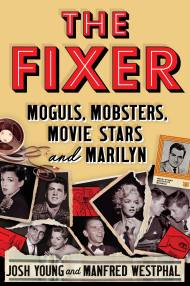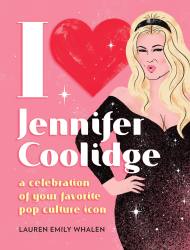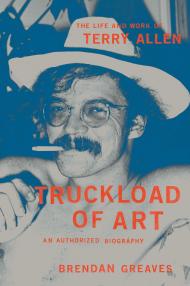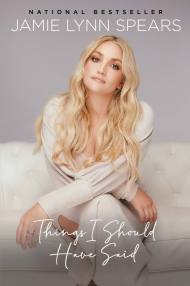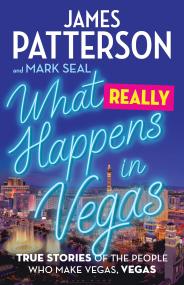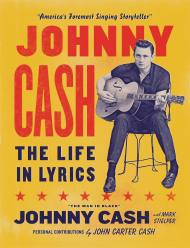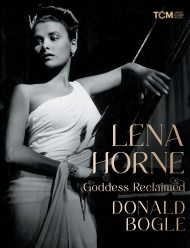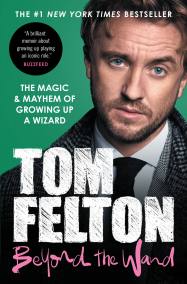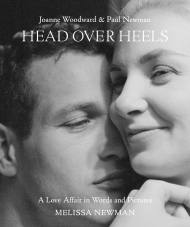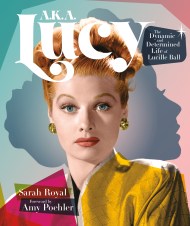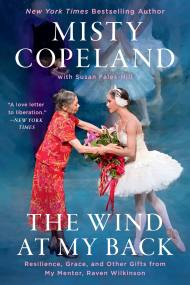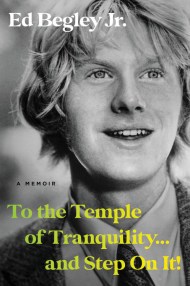THE WINNIE COOPER OF PITTSTON, PA
The first time I went ice skating I absolutely fucking hated it. I was about five years old and had beggedmy parents to take me to Montage Mountain, a small ski resort in Scranton, Pennsylvania, where we lived. At the bottom of the mountain was the field for the Scranton Red Barons, the local minor league baseball team. In the winters they would turn the field into an ice skating rink so those who didn’t want to risk their lives on the bunny hills of the mountain could instead risk their lives on this makeshift pond, with at least fifty people who would be wearing knives on their shoes and had no idea what they were doing.
My parents brought me there because I was begging to go to a rink, any rink, and this is the one they chose. I had gotten the idea to go skating from one of those giant tins of popcorn that you usually only grab at CVS when you need a last-minute gift for some random office Secret Santa or when you’re running late to your aunt Gail’s Christmas party. You know the ones—they are divided into three compartments inside for regular, caramel, and fluorescent orange “cheese” popcorn. Hey, I’m not above it. I’ve given one or two in my day, and everyone loves a giant popcorn tin. On the outside of this particular tin was an idyllic Victorian scene of all these people skating happily on a frozen pond. After someone gave it to my dad for Christmas, it was around the house and always filled with cookies or snacks of some kind.
Not only did I love whatever was inside that tin, I also loved what was on the outside. There was one woman on the tin that I was infatuated with. She was gliding across the lake on one skate, the other one dangling in the air behind her. She wore a long black coat, a matching bonnet, and a white muff. It was the muff I was fixated on, and the first time I saw it was maybe the first time I knew what love was. I wanted to glide as effortlessly across ice as this mysterious and fabulous Victorian woman, and I knew that a white muff was essential to making that happen. For the record, this is the only time in my entire life that I ever needed a muff but not the only time I wanted one. I wouldn’t be too proud to wear one today—it’s just that I’ve never really encountered the right muff.
For a couple of months I pleaded with my parents to go ice skating. I would say, “Wouldn’t it be really fun for the whole family to go to a rink? I think it would be a really good time.” That’s me—selfless to the end. Eventually, my parents agreed to take my younger siblings and me to Montage Mountain. I had this perfect vision of what skating would be like inmy head and I knew exactly what I would be wearing. I had this one fleece jacket with huge toggle buttons, sort of like the coat that Paddington Bear wears. I would wear that, blue jeans, plastic rental skates, and, of course, a muff. The muff would obviously be the key to my success.
None of this ended up happening. The toggle coat was really more of a lightweight fall jacket that was not suitable for the Scranton winter, especially on an outdoor ice rink. My mom nixed it immediately. And the muff ? Forget it. “We’re not going to get a muff,” my mom said. “You don’t need a muff. Where do you even buy a muff ? You’re going to wear mittens. You need to have your hands free if you fall. You’re going to wear mittens and this ski suit and we’re going to go skating.” Fall?! My poor mother, I thought. She didn’t know who she was dealing with.
The sleeves of the ski suit had elastic around the cuffs, so I couldn’t even fit my hands in the opposite sleeves and pretend I was wearing a muff like I had planned to do as backup. But as my parents’ green Chrysler Town & Country minivan got closer to Montage Mountain, I convinced myself to get over it: I don’t need any of that stuff. I’m still going to be amazing. My blue ski suit had green lightning bolts down the side that I felt gave off the vibe that I would be going very fast. Even though I wasn’t dressed like her, I could still saunter across the ice just like the popcorn tin lady.
My mom laced up my skates and we went onto the ice with all the other families out for a day of frosty fun. I took one step with the confidence of someone who had been touring with the Ice Capades for thirty years and immediately fell over. I was wet, cold, and absolutely devastated. I sat in the middle of this makeshift pond, with the wind stinging my eyes, and stared up into the dark winter sky asking God to teleport me to the warmth and safety of the couch in our living room. The whole time we were out on that drafty fake lake, all I wanted to do was go inside and sip on a Swiss Miss hot chocolate—another fantasy that wasn’t to become a reality that day. After that fiasco, I never wanted to go ice skating again. My dreams of being the world’s next “popcorn tin lady” were over.
Her elusive muff is a reminder that a lot of the major events of my childhood revolved around whatever outfit I would get to wear. For example, another one of my grand dreams was to host a talent show on the back deck of our house. As I planned it in my mind, I would coax my two younger brothers into performing their talents, which, at the time, probably would have been something like naming every species of dinosaur, singing the first verse of “Till There Was You,” or maybe they would have stuck to what they knew best and shown off how they were able to stick their heads through our fence and not get stuck (which they were able to do at least 70 percent of the time, and it was honestly impressive). I knew that, no matter what they did, I was going to be the star of the show, and that’s all I was concerned about. I was going to wear a white turtleneck shirt and these red plaid pants that my grandmother’s sister bought for me. While this is not something Ryan Seacrest would normally wear, I was convinced it was the fanciest thing I owned because of where it came from.
We called my grandmother Nana and her sister Nono. Nono spent a lot of time with my family because she had no children or grandchildren of her own, and she was a star ofmy childhood. For some reason I thoughtNono was the chicest person on earth. I remember her having fur coats and a maid, but that might be a fiction I concocted to make Nono seem famous. She drank canned Donald Duck orange juice just as I imagined everyone in Hollywood did. Every time I saw her it was like looking at a movie star or Princess Diana or someone else whose job it was to be professionally glamorous.
I got this whole idea for a talent show from an old episode of Barney & Friends where the purple dinosaur had a talent show for all the kids on the program, including a young Selena Gomez. I wasn’t just going to be like Barney hosting the talent show; I was also going to be like Selena Gomez, showing off my own considerable talent. Naturally, I was going to tap dance. Granted, I had never taken a dance lesson, and certainly not a tap dancing lesson, in my entire life. But I figured if I could get on my plaid pants, grab the microphone from our karaoke machine, and drag the entire family out onto the deck that the ability to tap dance would just flow through my body like a gift from above. Unfortunately, the world would have to wait to witness the Gwen Stefani of Scranton, PA, because the Rippon talent show was not meant to be.
My plan was that I was going to put it on when everyone in the family was visiting my house for a birthday party or a barbecue. But every time one of these events occurred, there was always at least one Rippon child having some sort of meltdown—maybe my brother was crying or my sister shit her pants. It was always something. Even worse, I could never findmy plaid pants. My mother stored them away somewhere in case I needed an emergency Easter outfit and she didn’t have the decency to tell me where they were.
One of the biggest meltdowns of my early years had to do with another costume. It was Thanksgiving week, and everyone in my preschool class was asked to choose if we wanted to be a Pilgrim or an American Indian.Well, I went to school in the early ’90s when the teachers called them “Indians.” Sorry—we didn’t know better at the time and hopefully they’ve updated their curriculum. If they haven’t, they’ll definitely be hearing from my lawyers. I’ll stick to American Indian for the rest of this story.
When the class was selecting which one they wanted to be, I was having my daily cry in the mud room (more on that later) so I missed the roll call. I just assumed everybody was going to be a Pilgrim. I was shocked to discover that in my class of thirty, only four people were Pilgrims. I was one, and all the cool kids were American Indians. Everyone else was making a vest out of brown craft paper, and they got to wear a feather headdress. It was the kind of themed costume I could only dream about.
The teacher showed us that the Pilgrim costume we were going to make was a giant collar and a hat with a buckle on it. When I found out I was going to be stuck as a dowdy Pilgrim in this stupid hat, my heart sank. I got home from school and sobbed to my mom. “You have no idea what they’re going to make me wear,” I blubbered through my tears. The Thanksgiving party finally came, and I spent the whole day crying again because all my friends were basically wearing haute couture vests crafted from paper grocery bags with Bob Mackie–inspired headdresses, and I was stuck in a blue cardboard collar and a hat that wasn’t even stylish in the seventeenth century.
Outfits weren’t the only cause for meltdowns when I was that age. Every day at preschool was hard for me. I went to Step-Up Preschool and on the drive there, I would cry. We got into a sort of routine where my mom would be driving me and I would sit in the passenger seat of the car (it was 1994 and apparently five-year-olds were still allowed in the front seat—I don’t know; ask my mom) repeating, “Tell me a joke. Tell me a joke. Tell me a joke,” over and over as I rocked back and forth like Meryl Streep in a movie where she cries in the shower. I hated that car ride to school because I had this irrational fear that my mom would drop me off, forget about me, and I would have to live at my preschool my entire life. I thought if I could laugh, then I wouldn’t be so anxious about going to school. If I could just think about something else for a second, I would be OK.
My mom kept a joke book stashed on the dashboard of the car and she would read me a different joke each day. It had to be a new joke, because if she would repeat one, I would say, “Mom, you already told me that one. How am I supposed to think it’s funny if I already know it?” Even at five it was important to me to keep hearing fresh material.
There was a mud room at the school where all the kids would leave their jackets, boots, and Power Ranger backpacks before going into the class. I would sit in the mud room by myself and cry for a bit. Only once I was done crying could I enter the classroom for a day at school. I would take my seat like nothing had happened. I was perfectly fine. It was my first acting gig, and if I didn’t deserve an Oscar, I at least deserved a Golden Globe.
Crying wasn’t the only way my anxieties manifested themselves—when I was little, I also had crippling superstitions. I thought I had to abide by these arbitrary rules that I set for myself, but even when I did, they didn’t make my life any better. As I got older and deeper into my professional skating career, I became superstitious about being superstitious. If something started to get into my mind like, “Every time I enter the ice from this door I skate really well,” I would go out of my way to eradicate it. I would deliberately use a different door every time or walk all the way around the rink to make sure that I wasn’t getting hooked on using the “good” door. This might sound crazy, but as you will learn, I am crazy. I do those things even now and I need to tell myself that it’s just stupid, crazy stuff that I made up in my head.
Also, I had a severe case of perfectionism and nothing could cure me. I always had to have absolutely perfect grades or I wouldn’t forgive myself. Once, there was a science test that I was worried I hadn’t gotten 100 percent on, and I wanted to do something dramatic. I had seen a rerun of TheWonder Years where Winnie Cooper got a test back and she was nervous about looking at the score. She ran home from school, closed the blinds, and locked herself in the closet. She had a flashlight in the closet and she turned it on and then opened the folder with the test inside, shutting her eyes tightly. When she finally opened them and looked down at the grade, it was the perfect score she wanted.
I was going to do the exact same thing and it would give me a perfect grade, because if it worked for Winnie Cooper it had to work for me too. So I ran home, closed the bedroom door, closed the blinds, and ran into the closet. The door to my closet was always open, so I had to scrape it along the carpet to get it closed and it took a ton of effort. Then I was in the closet and falling all over my clothes, and things were falling off their hangers onto my head. I sat on the top of the hamper and it creaked under my weight because an eleven-year-old should not be sitting on a hamper to check his grade for a science test, but for the full effect of this ritual, it had to be done. I didn’t have a choice.
Finally, I turned the light on and I put my hand over the grade so I still couldn’t see it. Then I took my hand off the grade but closed my eyes, just like Winnie Cooper. I thought to myself, “This is going to be a one hundred. I absolutely know it.” When I opened my eyes to look, instead of a one hundred I saw a ninety-nine. I immediately started bawling. I went through all that fuss with the closet and I still didn’t get a one hundred. Winnie Cooper had no idea what she was talking about. This would be my first bad experience of being in the closet, but as I would later learn about myself, not my last.
Because I was always a crying, nervous mess at school, I never felt like any of my teachers really liked me. That all changed in second grade when I had Mrs. Lucarelli, a good Italian woman who loved the tuna hoagies that the cafeteria served every Wednesday. Near the beginning of the year, Mrs. Lucarelli said she needed a volunteer for a very special job. Everyone raised their hands, so I raised my hand too. Mrs. Lucarelli called on me rather than any of the other thirty kids. “Adam, here is some money. Go down to the cafeteria and get me a tuna hoagie.” Not only did I do it but I wanted to be the best tuna-hoagie retriever that Our Lady of Peace had ever seen. If Uber Eats were a thing in 1997, I would have been determined to get five stars.
I must have done a good job because every Wednesday it was my job to go down and get Mrs. Lucarelli’s hoagie. That was my first taste of being a teacher’s pet and I found it intoxicating. I mean, first of all, how could you not love all this wonderful, highstrung, overachieving, daily mental-breakdown mess? Second of all, I finally felt for the first time that I had a friend in class.
It’s not like the other kids were mean to me; it’s just that none of them really wanted to play with me on the playground. In fifth grade I would brag to my classmates that I was only forty pounds. Why? I don’t know. It was a stat that guaranteed me to get picked last for every recess kickball game. But I didn’t want to play kickball; I wanted to jump rope and hang out with Sarah, the only girl to comfort me in preschool during my mud room crying jags, which will always make me think of her as a goddess who saw through my shortcomings.
Eventually I did make another friend, Alex. We just sort of found each other because we were the misfits of our class. I was a skinny, short kid with full-size adult front teeth in a child-size head, and Alex was a husky boy who was missing half of his pinkie finger, but to me he was the coolest person I’d ever met.
He was the yin to my yang. I think maybe no one knew what to do with either of us, and then we found each other. Alex was the only classmate who would invite me over for playdates and to hang out at his house. He had a Nintendo and we would play Super Mario Bros., and even though I was awful, it was the best time I had ever had. He also had an air hockey table in his basement, which really blewmy mind. It was nothing revolutionary, but he was always nice and sensitive and made me feel like I belonged somewhere.
The time Alex and I spent together always seemed special, because it was so rare for me to have someone who wasn’t related to me to hang out with. Once, I went to Alex’s house and his mother made us that childhood staple: grilled cheese and tomato soup. When my mom came to pick me up later, the first thing I said to her when I got in the car was, “Alex’s mom made the best soup. It was delicious.” I went on and on about this soup for days, asking my mom to make it for me again because it was so heavenly.
My mom finally got so interested (what could this gourmet family recipe be?) that she called Alex’s mom and asked her for her soup recipe. “It’s just Campbell’s soup from the can. I don’t know why he loved it so much,” she told my mom. So my mom got it for me at the store and made it one afternoon. I thought my mom must have made it wrong because it wasn’t nearly as good as it was at Alex’s house.
Even though I wasn’t Mr. Popularity in grammar school, it as a school rule that if someone in the class was going to have a birthday party, then everyone had to be invited. In fourth grade, just before I turned ten, one of the girls in my class, Anastasia Davenport (if that’s not her drag name, then maybe it should be mine), decided she was going to have her birthday party at the Ice Box. It was a brand-new skating rink that had just opened in nearby Pittston, Pennsylvania, a town just as glamorous as its name implies.
At first I wasn’t excited about it because of my experience at Montage Mountain and because, once again, there would be no muffs. But when we arrived at the rink, it was totally different. It was inside, so even though it wasn’t warm, at least it wasn’t freezing cold and windy.
But the real reason I was willing to give skating another chance was because a year earlier I had watched figure skating for the first time on TV, during the 1998 Olympic Games. (My mom says we watched the 1994 Olympics together, but I was four and must have been in a blackout because I don’t remember a thing.) My mom had invited her friend Andrea to come over and watch the games. I had never met Andrea before, but I heard a lot about her. If this stranger was coming over just to watch something on TV, it meant the event had to be something special. I can’t help but get excited about an occasion.
I got even more excited about the Olympics when, on the afternoon of the big day, we were in the drive-thru at McDonald’s and the announcer on the car radio said he had the results of the women’s individual figure skating competition and if you didn’t want to spoil that night’s prime-time coverage of it, then you should turn off your radio now. My mom heeded that prehistoric spoiler alert and I thought to myself, “Wow, this is going to be so dramatic when we finally find out who wins!”
Once Andrea arrived, I thought we were all going to watch the competition together and, when it was over, have our own medal ceremony. This was just a few months after the holidays, so I found some Christmas ribbon and cut circles out of paper to make gold, silver, and bronze medals. I loved watching Michelle Kwan battle Tara Lipinski, especially because it was being billed as this supreme artist against an up-and-comer, but I fell asleep halfway through and my mom had to tell me who won in th morning. I was happy for Tara, but mostly I was upset that I didn’t get to perform the mock medal ceremony with my homemade medals in my living room.
Because of all this, I was willing to give skating another chance as long as it wasn’t at Montage Mountain. When I got to the rink, I was skating around with the kids in my class. I wanted the ice to be really worn out, full of the cracks and divots that professional skaters hate. Twice during the public skate they cleared the rink so the Zamboni could cut fresh ice, and I didn’t like that. When the ice was smooth, it was fast and furious, and I was already too much of both. Once the ice got sufficiently bombed out, I learned that I could go slow enough to move around and start to have some fun.
There were some local girls who I had never seen before skating at that rink, and they knew a few simple jumps and how to do spins on one foot. During a normal public skate the figure skaters have to skate in the middle because the rest of us laypeople have the perimeter of the rink to be messy train wrecks and fall all over the place. I remember watching these girls in the center and being completely enamored. I thought they were the coolest thing ever, and though the kids who were cool at school never wanted to hang out with me, I thought maybe these girls might.
These master skaters didn’t know who I was. It was a fresh start. They had never seen me cry in the mud room or try to impress the teacher with a hoagie delivery. It was like in a movie when someone moves to a foreign country and changes their name. Better yet, it was like a classic rom-com where the heroine takes off her glasses and gets her braces removed (either from her legs or her teeth, but maybe both) and the audience realizes there was a beauty hiding underneath the whole time. This was my version of that.
I was feeling kind of brave, so I skated into the middle—or more likely crawled or slowly glided, because I was really bad at stopping. I went up to a girl who was doing the single-foot spin and asked her how to do that. “I don’t think you can, but I can teach you how to do a two-foot spin,” she said.
At that moment I was sold. It was the first time someone my age offered to teach me something, and they were excited about it. Several of the girls took me on as their project for the day. I remember them telling me I had to go over to one of the dots painted under the ice that hockey players use (I still have no idea what they mean), and I should practice spinning in that dot. They were all helping me do a two-foot spin in the middle of the ice. Who knew where the rest of my class was? Who cared? I was where the action really was.
Two of those girls were Kitty and Jocelynn, who were already honing their skills with figure skating lessons. They would later become my friends when I started skating all the time. I just thought they were totally amazing, and them teaching me how to skate felt like Mariah Carey and Whitney Houston taking a break from dueting on “When You Believe” to give a young singer a voice lesson. When the informal lesson was over and we had to clear the ice, one of the girls said, “You should come back; it would be really fun.” I knew, at that moment, that I would certainly be back, if not only for the skating but for something I’d never felt before that day—the warm Swiss Miss–hot-chocolate glow of acceptance.



